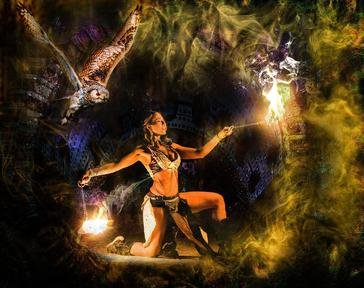Quiz Answer Key and Fun Facts
1. This famous British ballet dancer dances for the Royal Ballet and is one of the most famous dancers of our time. She has received many awards for her dancing and also has an OBE. Who is she?
2. This famous American dancer of musical comedy films was known for his graceful, sophisticated dance-style and is most remembered for dancing on the big screen with dance partner Ginger Rogers. Who is he?
3. This American expressionist dancer based her style on the dances of the Ancient Greeks and is one of the founders of 'Interpretive' dance. Who is she?
4. This famous exotic dancer used her talent to become a spy for Germany during the First World War. Do you know who she is?
5. This Russian ballerina is the most famous classical ballerina ever, having danced many of the major ballet roles. Who is she?
6. This famous British ballet dancer was president of the Royal Academy of Dancing and was awarded the title of 'prima ballerina assoluta'. Do you know who she is?
7. This American man was a famous tap and ballet dancer, choreographer, actor and director. He was mostly known for his contribution to musical films. Who is he?
8. This man is a famous Spanish dancer and choreographer of the modern-day who has developed an original take on the tradition of flamenco. Do you know who he is?
9. This American choreographer, dancer, and teacher, was a major and one of most influential figures in American modern dance for more than 50 years. Who is it?
10. This American choreographer and teacher, developed a dance theatre of abstract forms, colours, and lights. Do you know who it is?
Source: Author
Cara Splash
This quiz was reviewed by FunTrivia editor
JuniorTheJaws before going online.
Any errors found in FunTrivia content are routinely corrected through our feedback system.
